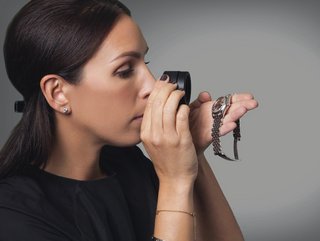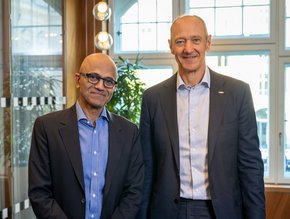Timeless: The enduring appeal of the luxury watch

Fine art, wine, classic cars – just some of the categories that spring to mind when considering the world’s most collectible luxury items.
According to recent research from Market Decipher, the global collectibles market is estimated to be worth around US$462 billion in 2023 and is forecast to reach an eye-watering US$1 trillion in a decade’s time.
Clearly, demand for certain items – often at the lower end of the market – is largely dictated by pop culture trends, as has been seen in recent months with the revival of doll collecting following the release of the Barbie movie. Meanwhile, public appetite for Yeezy trainers has remained high despite Adidas severing its ties with the rapper formerly known as Kanye West.
It would be remiss, however, to explore this burgeoning market without giving weight to the trusty watch, collected for decades by enthusiasts obsessed in their pursuit of horological perfection.
Whether new or second hand, the very rarest, most sought-after timepieces continue to fetch astronomical sums, demonstrating their enduring appeal.
Early wrist watches a ‘feminine pursuit’
It seems almost hard to believe that wrist watches, worn these days with varying regularity by hundreds of millions of people, were once secondary to pocket watches.
“Dating back to the 16th century, the first pocket watches were large, heavy and cumbersome by today’s standards,” explains Rebecca Ross, VP and Head of Sale in the watches department at Christie’s, based in New York. “But, as watchmaking skills improved, they became smaller.”
While the existence of wrist watches can be traced back to a similar point in time, wearing one was actually seen as a feminine pursuit and remained so in the ensuing centuries.
The wrist watch undoubtedly went on to become a statement piece for the modern man, but women were the first to make the statement.
“While men proudly sported pocket watches, it was women who were the first to wear watches on their wrists, primarily in the form of jewellery,” Ross adds.
“Although certainly admirable for their elegant and artistic exterior and a sign of luxury, their function was not of much consequence as it is today.”
A significant turning point came during the First World War, when officers began to appreciate that a watch on the wrist was a much more convenient way to keep time.
The rest is history, as they say, is history. Having started life as what were essentially pocket watches strapped to the wrist, manufacturers were making more and more purpose-built wrist watches as the 20th century progressed.
Going, going, gone!
If anyone in the industry is well placed to assess the luxury watch market, it’s Ross, whose tenure at Christie’s began in 2014.
After achieving her master’s degree at Christie’s Education, specialising in History of Art and the Art Market, Ross’ appreciation of art was expanded to include timepieces. She had already been exposed to the artistry of clocks and watches from an early age through her father’s collection.
Her job now involves travelling worldwide to track down the rarest timepieces for inclusion in various Christie’s auctions throughout the year, while also managing client wish lists on a private sale basis.
Ross has been responsible for offering some of the most recognised timepieces in New York auction history. Her Important Watches live auction in June 2022 totaled more than US$21.7 million, setting a new record for a watches auction at Christie’s New York.
Asked to pick out some of the more notable items sold by Christie’s in recent years, one of the first that springs to mind for Ross is a special edition Patek Philippe Reference 5531R depicting the Lavaux Vineyards on the shores of Lake Geneva. With an estimated sale price of between US$1m and US$2m, it ultimately sold for US$2.22m.
Another is an extremely rare automatic triple calendar Rolex 6062 with star dial and moon phases, which had remarkably remained in completely unworn condition and even came with the original strap. For Ross, this is a “personal favourite” due to the stunning patina on the 18k gold case, and it helped the lot fetch US$542,500.
However, her absolute favourite luxury wrist watch is the Patek Philippe Reference 5110, the first World Time complication watch to be produced by the esteemed manufacturer since the 2523 went out of production in the mid-1960s. The 5510 went out of production itself in 2006 and was replaced by the 5130.
“To me it’s the perfect size at 37mm,” Ross adds. “The complication is very useful for travel, the design is so interesting and attractive with 24 cities around the dial, but somehow it still manages to keep its elegance.”
Luxury watches maintain timeless appeal
Ross asserts there are four dominant factors that make luxury watches such sought-after items:
- Collectability
- Rarity – for modern watches, this is based on production numbers including limited editions; for vintage watches, this relates to how hard they are to find in good and original condition
- Provenance/history – for vintage watches, this can provide added meaning to a luxury watch
- Desirability – driven by the market
Of course, the high-end watch market is constantly evolving, but Ross points to the annual Only Watch auction – taking place this year in Geneva on 5 November – as being the perfect opportunity for manufacturers to unveil “astounding” new creations.
Many of the biggest companies in the industry will step outside their usual production runs to produce a single, unique watch specifically for this showpiece event.
As for emerging trends, Ross reveals clients are increasingly taking a keen interest in 1990s timepieces from top producers like Breguet, some of which she believes are still “greatly undervalued”.
Interest in smaller watch faces is also continuing to grow, while buyers are striving more than ever for vintage watches in top condition – as they surely must if they are to take their collections to the next level.






